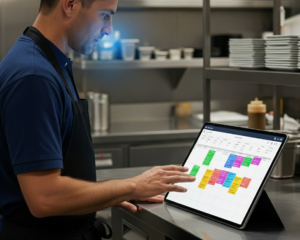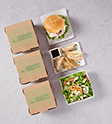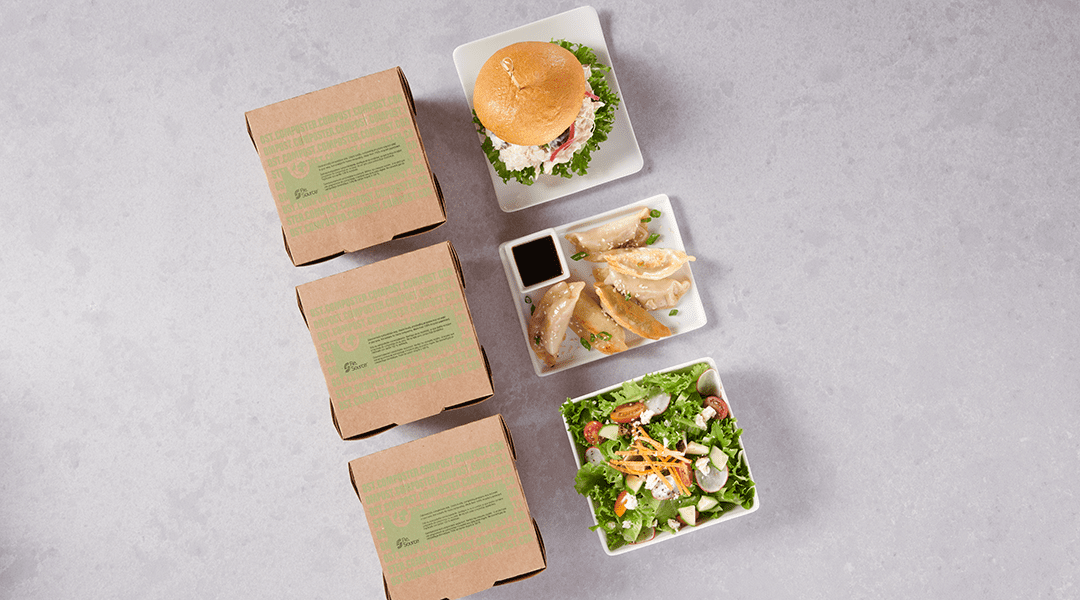Taking inventory is a bit like managing a bank statement. If you don’t do it regularly, you could be in for a big surprise. Inventory management gathers the data needed to track stock, understand usage and control costs.
Foodservice inventory includes everything involved with production, service and running a kitchen and dining room. Depending on what falls under a foodservice director’s supervision, this can include food, beverages, tabletop essentials, cleaning supplies and more. Proper inventory tracking can improve efficiency in the kitchen, show where waste is occurring and even expose theft problems.
You may think you know a lot about inventory and inventory tools. But Gordon Food Service Supervisor of Customer Technology Matt Dyksterhouse points out that operator personnel changes and technology upgrades mean there’s always a need to take a fresh look at inventory tools. “I’m willing to bet there’s something new for everyone to discover when it comes to inventory technology tools.”
Inventory is all about numbers, and numbers don’t lie. Collecting numbers and ignoring what they mean to your business efficiency means you’re hurting your budget. It’s something no operation can afford. You can improve your chances for success with these top reasons to do inventory in healthcare.
1. Get a handle on food costs
The main reason to take inventory is to understand the value of food on the shelves. Dyksterhouse notes the Inventory Manager tool does this in time-saving fashion. Users can take inventory using a mobile device that creates an Inventory Value Report spreadsheet to put dollar values to items in stock.
“Operators need to know how much money is sitting on their shelves,” he says. “Without a dollar value there’s no way to accurately calculate plate costs and make adjustments to stay within budget.”
The Inventory Value Report can create a ledger of food, non-food and supplement costs, making it possible to get a solid read on per person day (PPD) costs. It also is capable of tracking costs of goods sold.
2. Avoid the guesstimation game
Recipes rely on precision. Glugs and handfuls are inexact. Using teaspoons, cups or measuring weight for each portion not only makes the meal turn out right, but it keeps food costs from fluctuating. Inventory works the same way.
Unless you know how many boxes or pounds of a product you have in storage, you risk ordering products you don’t need. “If you think you need more broccoli when you already have several cases on the shelf, ordering more leads to potential spoilage and waste,” Dyksterhouse says.
Using Inventory Manager takes the guesswork out of the value of your stock, and this plays a role in menu planning, recipe adjustments and understanding PPD costs.
Online Ordering, another valuable tool, can solve another inventory-related challenge—establishing par levels. This makes sure operators know exactly how many cases are on the shelf and what the number should be. It reduces excess ordering and time spent managing ordering and storage. It’s also a way to make sure of meeting emergency stock regulations.
Often, when operators think of “taking inventory,” they think in terms of ordering—counting what’s on hand to make sure the right amount is ordered. For those scenarios, Gordon Food Service Online Ordering is another valuable tool that allows for you to build par levels. This makes sure operators know exactly how many cases are on the shelf and what the number should be. It reduces excess ordering and time spent managing ordering and storage. It’s also a way to make sure of meeting emergency stock regulations.
3. Create kitchen efficiencies
Taking inventory regularly is smart. It may not be necessary to take inventory three times a week just to manage stock. But because food prices change due to supply and demand, it’s a good idea to take smaller inventory counts between your scheduled weekly, bi-weekly or monthly checks.
“It’s not critical to know if you have enough sugar packets in stock, but it is important to count your top 10 or 20 high-value items,” Dyksterhouse says. “This can be accomplished using the ‘tagging’ feature in Inventory Manager.”
These smaller inventory counts are a big help. If stock is low and the cost of a product rises, you learn about it right away and can adjust the menu to prevent a negative impact on PPD or plate costs.
A better understanding of your inventory leads to efficient ordering. This helps the kitchen stay organized. When an operator knows what’s in stock and what is coming into the kitchen, products are accounted for and put away faster, saving labor and time.
Accurate inventory records, combined with data on production and usage also can reduce food waste and theft. By detecting discrepancies in amounts ordered and quantities used, it reduces the potential for theft to go unnoticed. It also can help an operator cross-check data to adjust the way food is trimmed by prep chefs or the portion sizes used on the tray line.




























